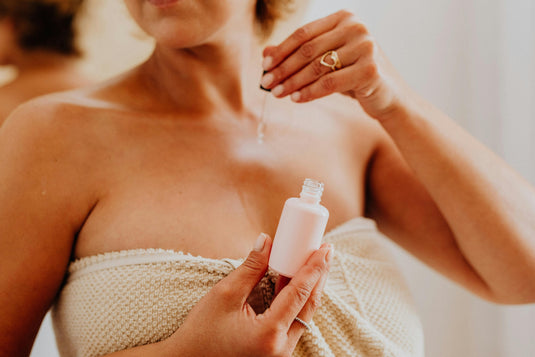Outline
-
Introduction
-
Understanding Skin Reactions
-
The Composition of Silver Jewelry
-
Causes of Skin Reactions from Silver Jewelry
-
Identifying an Allergy to Silver Jewelry
-
Prevention of Rash
-
Hypoallergenic Silver Jewelry Options
-
Caring for Silver Jewelry
-
Personal Stories and Testimonials
-
Consulting a Dermatologist
-
DIY Solutions and Remedies
-
Choosing the Right Jewelry for You
-
The Science Behind Metal Allergies
-
Conclusion
-
FAQs
Introduction
Have you ever put on a beautiful silver necklace, only to find an itchy, red rash developing on your neck a few hours later? You're not alone. Understanding why this happens and how to prevent it can save you a lot of discomfort. In this article, we'll dive deep into the world of jewelry-related skin reactions, focusing on silver necklaces.
Understanding Skin Reactions

Before we get into specifics about silver, it's important to understand the types of skin reactions jewelry can cause. The most common reaction is allergic contact dermatitis, a form of eczema triggered by an allergic reaction to a substance. Symptoms often include redness, itching, swelling, and blisters.
The Composition of Silver Jewelry

Not all silver jewelry is created equal. Pure silver is relatively soft and not typically used in jewelry. Instead, sterling silver, which is 92.5% silver and 7.5% other metals (usually copper), is more common. These additional metals can sometimes be the culprit behind skin reactions.
Causes of Skin Reactions from Silver Jewelry

Nickel Allergy
Nickel is a common allergen found in many types of jewelry, including some silver pieces. Even a small amount of nickel can cause a reaction in sensitive individuals.
Copper in Sterling Silver
While copper itself is not a common allergen, it can cause reactions in some people. When mixed with sweat, it can form salts that may irritate the skin.
Reaction to Other Alloys
Other metals used in silver alloys, such as zinc or tin, can also trigger allergic reactions or skin irritation.
Identifying an Allergy to Silver Jewelry
Symptoms of a silver jewelry allergy can range from mild to severe and typically include itching, redness, and swelling where the jewelry touches the skin. In more serious cases, blisters or dry, scaly patches may develop. These symptoms can be mistaken for other skin conditions, so it’s important to observe whether they occur only when you wear certain pieces of jewelry.
Prevention of Rash

How to Prevent a Rash from Silver Jewelry
- Choose Hypoallergenic Jewelry Brands: Opt for jewelry labeled as hypoallergenic, which is designed to minimize allergic reactions. Tan Tan Gallery is one of the only jewelry stores that provides hypoallergenic jewelry out there. We tried our best to give the smile on our costumers faces.
- Keep Jewelry Clean: Regularly clean your silver jewelry to remove any dirt or buildup that could irritate your skin.
- Apply a Barrier: Use a clear nail polish or a jewelry shield product on the parts of the jewelry that touch your skin.
Hypoallergenic Silver Jewelry Options
What Makes Jewelry Hypoallergenic
Hypoallergenic jewelry is made from metals less likely to cause allergic reactions, such as pure gold, platinum, or titanium. For silver jewelry, look for pieces that are nickel-free and made with high-quality sterling silver. More than 90% of our jewelry from necklaces to earrings are made out of great silver material and are gold plated.
Recommended Hypoallergenic Silver Jewelry Brand
- Pandora is a great choice but they are so popular and has a high price.
- Tan Tan Gallery is a better choice because of the uniqueness of the jewelry and reasonable prices.
Caring for Silver Jewelry

Proper care can minimize skin reactions. Clean your silver jewelry regularly with a soft cloth and mild soap. Avoid using harsh chemicals that can damage the metal or cause irritation.
Personal Stories and Testimonials
Many people have experienced allergic reactions to silver jewelry. For example, Jane from Toronto shared how she developed a severe rash after wearing a poor quality silver necklace and found relief by switching to Tan Tan Gallery. Real-life stories can provide insight and reassurance to those dealing with similar issues.
Consulting a Dermatologist
If you experience persistent or severe reactions, it’s time to consult a dermatologist. They can conduct patch tests to identify specific allergens and recommend effective treatments.
DIY Solutions and Remedies

Some home remedies can help alleviate symptoms of jewelry-related skin rashes:
- Aloe Vera: Its soothing properties can reduce inflammation.
- Coconut Oil: Moisturizes and promotes healing.
- Baking Soda Paste: Can relieve itching and irritation.
Choosing the Right Jewelry for You
When buying jewelry, consider your skin’s sensitivity. Look for high-quality materials, hypoallergenic options, and reputable brands. Personal comfort and skin health should always come first.
The Science Behind Metal Allergies

Metal allergies occur when the immune system mistakes metal ions for harmful substances, triggering an allergic reaction. Research continues to explore why some people are more prone to these allergies than others.
Conclusion
Understanding the causes and prevention of skin reactions to silver necklaces can help you enjoy your jewelry without discomfort. Always opt for high-quality, hypoallergenic pieces, and take good care of your jewelry to minimize the risk of irritation.
FAQs
Can a silver necklace cause a rash on its own?
Yes, especially if it contains poor materials such as nickel or other allergenic metals.
How long does it take for a skin rash from jewelry to heal?
It varies, but most rashes heal within a few days to two weeks with proper care.
Are there specific skin types more prone to jewelry allergies?
Individuals with sensitive skin or a history of allergies are more likely to experience reactions.
What should I do if I develop a rash from a silver necklace?
Remove the necklace immediately, clean the area, and apply an over-the-counter hydrocortisone cream. If symptoms persist, consult a dermatologist.
Can I wear silver jewelry again after having a reaction?
Yes, but opt for hypoallergenic, high-quality silver jewelry and ensure it’s free from allergens like nickel.



